Olympic village
Berlin 1936: Olympic effort for an abandoned village
“Who needs maps anyway?” I won’t be doing that again. Then there was the prospect of cycling back! Alter, I was wrecked.
Yes, it truly was an Olympic effort to get there – Jesse Owens himself would have been proud – but there was no way I could arrive at this abandoned village once home to nearly 5,000 athletes, peep through the fence, and simply turn back the way I’d come. I had to go in!
So I did.
There used to be a time, before the shadow of suspicion accompanied every achievement, when the Olympic Games were the toast of the world.
Berlin’s in 1936 were the most captivating games of all, albeit for all the wrong reasons, not only doping. Coming at a time when the Nazis had been in power for three years, they provided Hitler with a stage to show the world their greatness and prove the superiority of the Aryan race.
That notion was knocked on the head when a member of a supposed inferior race proved superior to the rest. There was nothing inferior about Jesse Owens as his four gold medals affirmed, much to the pleasure of all but the so-called Führer.
Hitler’s native Austria only collected a measly 13 medals, compared with his adopted country’s 89, so he masterminded the Anschluß a couple of years later, before his insatiable appetite for more gold medals prompted his bid to take over the world in 1939.
Perhaps it’s no coincidence Nazi Germany attacked, fought or annexed countries that finished above Austria in the medal table from that Olympics.
Ireland escaped such a fate as it had boycotted the games, not for any bold political statement against the Nazis, but because of a row over northern athletes competing for the British. The British shared Adolf’s penchant for medals and had long plundered Irish talent as their own.
Anyway, such thoughts were far from my head as I contemplated the empty buildings lurking ominously between the trees behind the fence.
This was it! The Olympic Village, 14km west of Olympiastadion, built between 1934 and 1936, and abandoned since the last Russian soldiers left in 1992.
Berlin was supposed to hold the Olympic Games in 1916, but these were abandoned due to the outbreak of the First World War two years previously.
In a bid to bring Germany back into the international fold after its defeat, the International Olympic Committee decided in 1931 that the games should take place in Berlin after all, 20 years after originally planned.
I’d say Hitler, who got into power two years later, couldn’t have believed his luck. What better stage does a zealous despot need to showcase his country’s grandeur and assert his individual might?
The Nazis also saw the benefits of mixing sport and politics, and they weren’t going to let the opportunity slip.
The Olympic Village was built on a 550,000 square meter site on land belonging to the Wehrmacht (German armed forces) to the east of existing military camps at Elstal and Elsgrund.
The Nazis, considerate souls that they were, ensured that all the constructed buildings would go back to the Wehrmacht after the games.
They spared no expense – they even had animals and waterfowl from the Berlin zoo relocated for the man-made lake. A wooden cabin with veranda provided sauna-fun at one end for the humans.
Some 370,000 curious visitors came to see the site when it was open to the public between May 1 and June 15, 1936. Then more than 4,800 male athletes, coaches or advisors from some 50 countries moved in in July.
They were housed in 136 one-story bungalows. The 500 female athletes were housed at the Reichssportfeld, where the Olympiastadion was (and still is of course). Apparently the luxurious facilities proved a hit with the athletes. Only the constant military presence and shameless propaganda irked them a bit.
Leni Riefenstahl filmed athletes training here for the second part of her 1938 documentary ‘Olympia’ titled ‘Fest der Schönheit’ (Festival of Beauty). She seemed to take great pleasure in filming the naked men splashing about and showering.
The two-story Hindenburg Haus – named after the field marshal and German president Paul von Hindenburg, patron of the Games up to his death in 1934 –was the main administration center with its own theater/television exchange. It was here that the first tests were done on live TV transmissions.
The 1936 Olympics provided the first live sports broadcasts to the world via what would later become known as Tacheles.
The fun ran from August 1-16. After a ‘successful tournament,’ feted by the international press, the Olympic Village was renovated and handed over to the Wehrmacht.
The first soldiers moved in to what became the Infanterieschule Döberitz (Infantry School Döberitz) in December.
The huge Speisehaus der Nationen, which had 40 canteens to cater for the hungry athletes, was converted into a hospital, while the Hindenburg Haus became a school and lecture hall.
The Nazis got back to their pre-tournament ways and resumed their persecution of Jews and other groups.
Even before the tournament, they had forced several Jews out of German sports clubs and the national team. Part-Jewish fencer Helene Mayer was a notable exception, winning a silver Olympic medal for the country that persecuted her.
Olympic Village director Wolfgang Fürstner took his own life three days after the games ended. He had Jewish roots and learned he was to be dismissed from the Wehrmacht because he had been classified a Jew by the Nazis, so rather than face such humiliation, he shot himself with a pistol not far from the lake. The Nazis covered up his suicide to avoid unwelcome attention.
They got plenty of attention with the outbreak of war three years later, and were left to regret it when it ended nearly six years after that.
The Soviets took over the Olympic Village and used it to house military personnel from the Döberitz barracks, also seized from the Germans. It was they who erected the Plattenbau buildings, huge empty shells of soulless apartments, long after the last athletes were gone.
It’s been abandoned since the last Russian soldiers left in 1992. Now the apartments are left to the wallpaper that still flaps on their walls. Flap, flap, flap! As if trying to talk to you.
My heart was in my mouth. Strange noises came from below me, then above; wood creaking, paper rustling, doors groaning, metal banging. Banging, banging, banging. Then I realized it was my heart. I closed my mouth so it wouldn’t jump out and proceeded cautiously.
I was captivated. Everywhere was fascinating dullness, mundane marvels; everywhere an unknown story desperate to be told. Who lived here? What did they do? Where are they now? Where did they buy their wallpaper? I never took so many pictures of wallpaper in my life.
What’s left of the original buildings are now under Denkmalschutz and beginning to look a bit healthier than they did before. Restoration is proceeding at a slow pace, restricted by a lack of money and unsuitability for lucrative apartments. It’s just that too far from Berlin, for now.
Outside I met someone as surprised to see me as I was to see him. A rabbit, he was probably used to having the whole Olympic Village to himself, hopping around, imagining every day that he’s Jesse Owens winning another four gold medals. We both froze and looked at each other. He twitched his nose and was gone, running as if going for another gold. Nothing inferior about his race either.
LOCATION AND ACCESS (HOW TO FIND GUIDE)
- What: Olympic Village built for the 1936 Olympic Games in Berlin.
- Where: Elstal, Wustermark, Germany.
- How to get there Well, you could cycle like I did from Berlin, but I don’t recommend it. Better to take the regional train to Elstal and walk or cycle from there. An ABC ticket will cover you if you don’t want to risk “schwarzfahren.” Here it is on a map.
- Getting in: Go around to the other side away from the security and nosy guards, and just hop over the fence. Be careful! Or, and I write this with a heavy heart, you can actually visit it legitimately before Hallowe’en, paying €4 at the entrance to be allowed wander around at your own leisure. It’s not quite the same of course. You can do tours for €10 for access inside some of the buildings. Dogs are allowed if you think your dog would be interested. They don’t have to pay.
- When to go: Anytime before dark, preferably when it’s not raining.
- Difficulty rating: 4/10. Getting there is the main problem, but once you’re in, you’re laughing.
- Who to bring: People who don’t mind the sound of wallpaper flapping.
- What to bring: Camera. A few bottles of Sterni to break up the journey and/or toast your success on getting there. They’ll be warm once you arrive, but what the hell. Maybe bring a few snacks to nibble on too. Unlike the Olympics nowadays, there’s a surprising lack of catering stands in this abandoned village. I can’t recommend pistachios enough.
- Dangers: The imagination tends to run away with itself when exploring on your own, so watch out for that. Strange noises and eerie silences make for tingly nerves, unless you’ve paid in of course, which will make it as exciting as a visit to the supermarket. Otherwise, keep an eye out for the security guards. They take their job pretty seriously here. I figured Christmas Day would be a safe day to visit with everyone at home pretending to be happy, but there they were, zooming up after spotting me at the swimming pool and giving chase in a car despite the snow. I ran like Jesse Owens and obviously lived to tale the tale.
More abandoned sports facilities
Sporthotel Hohenschönhausen
The Sporthotel und Kongresszentrum des Sportforums Hohenschönhausen is in a sorry state, beyond salvation, thrashed and abused. Not even drugs can help.
Blub
Blub was a swimming and leisure center with pools, slides and crazy stuff that was very popular before the rats noticed it too. Then it was a blubbering mess.
Strandbad Tegel
The abandoned status of Strandbad Tegel looks secure. Campaigners are trying so hard to reopen it that you can be sure it won’t be opening anytime soon.
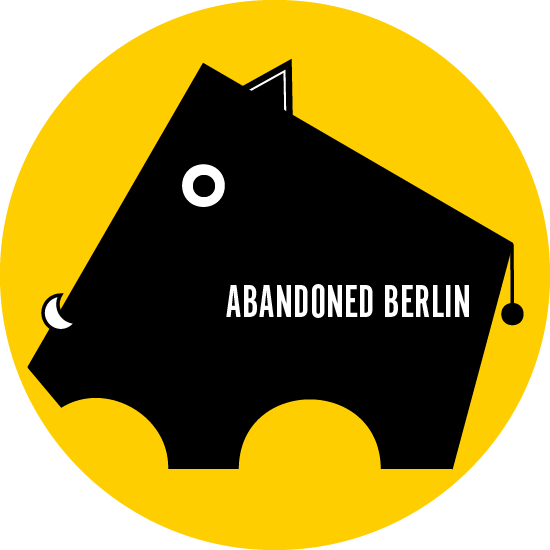
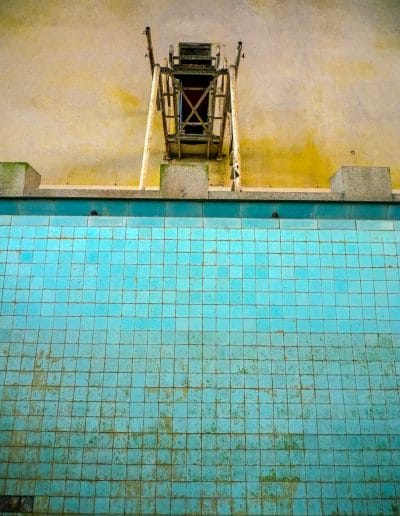

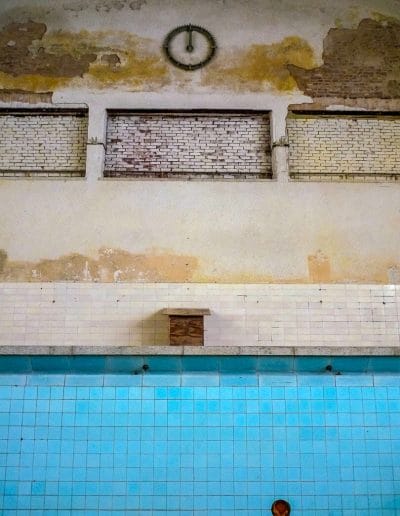
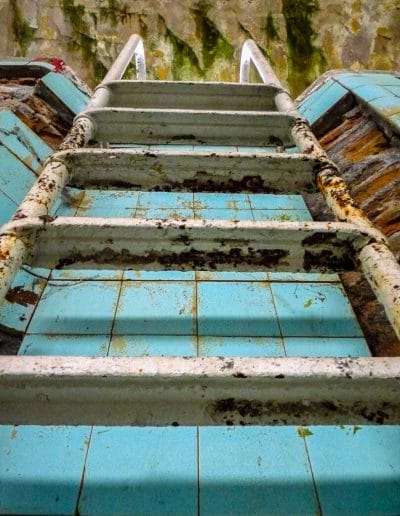
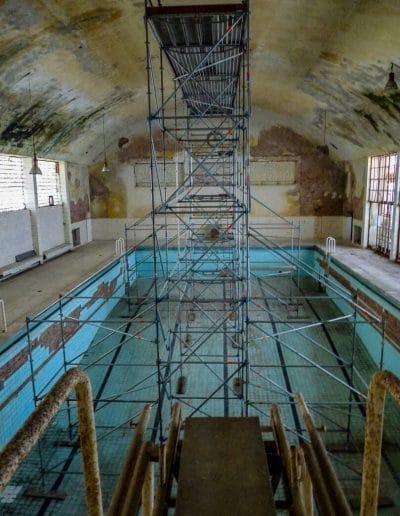
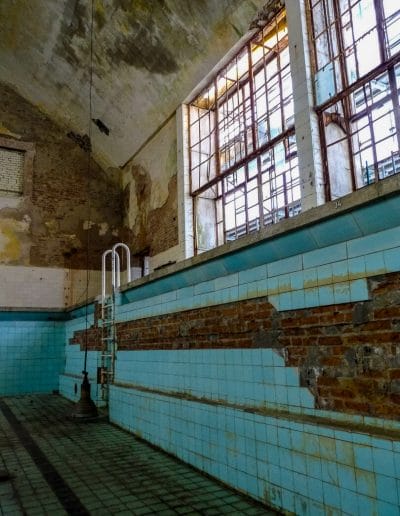
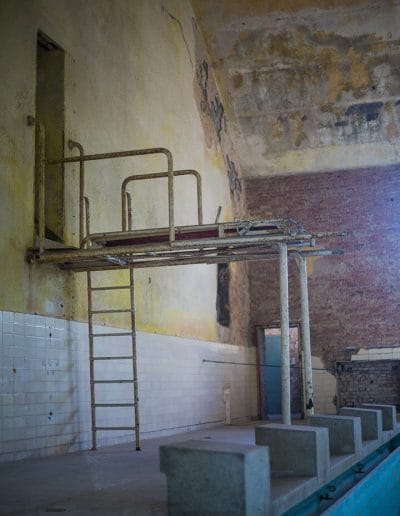
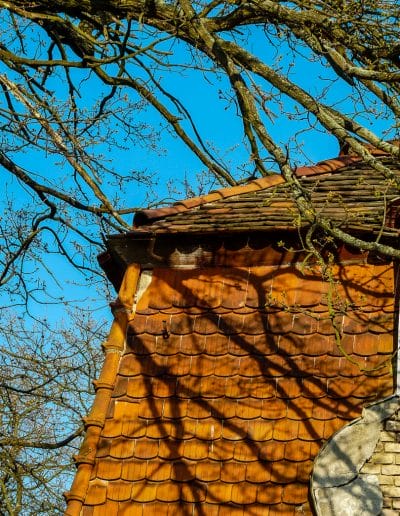

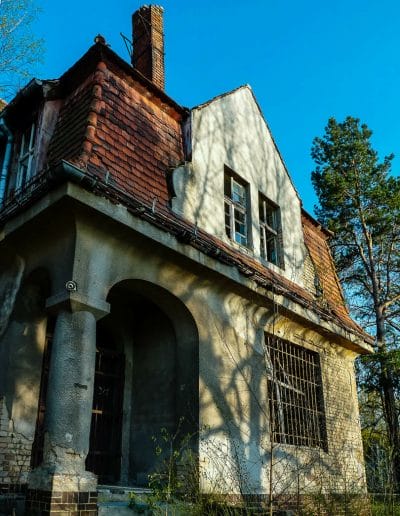
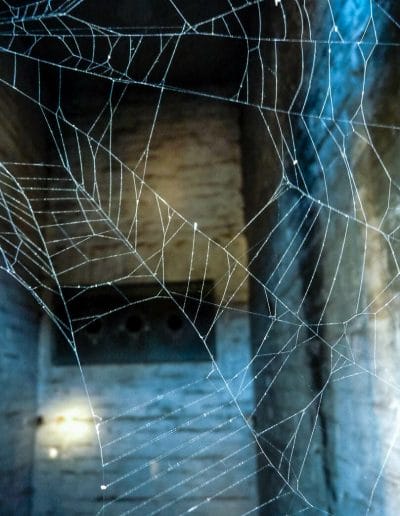


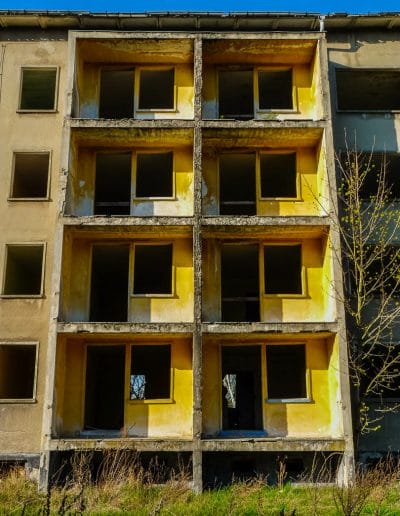
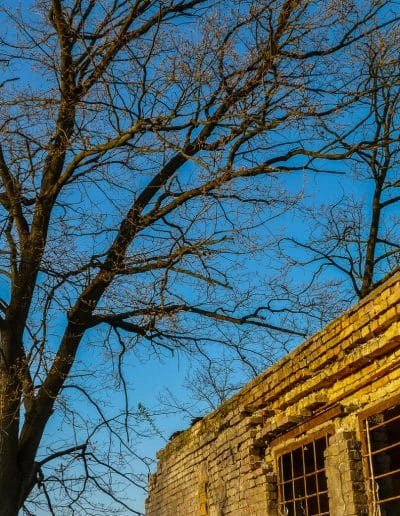
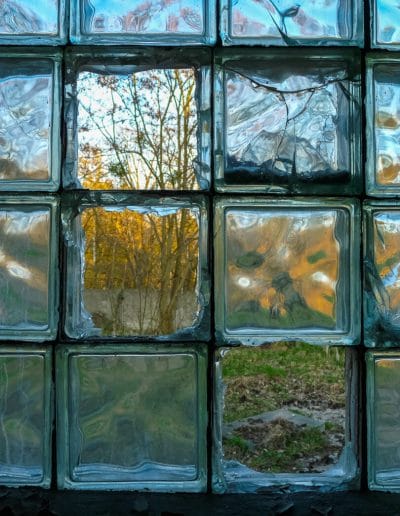
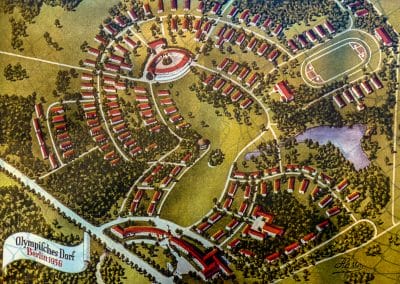
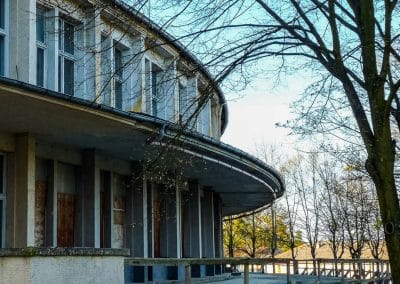
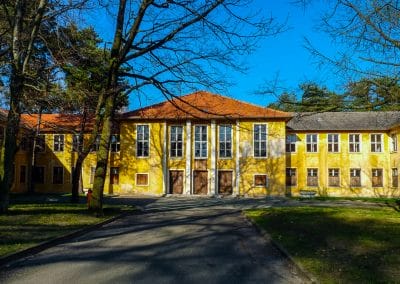


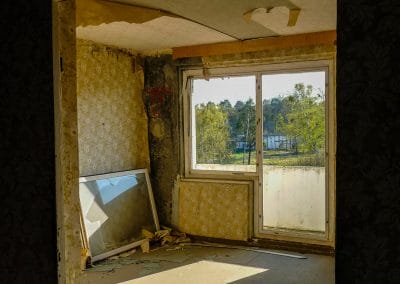
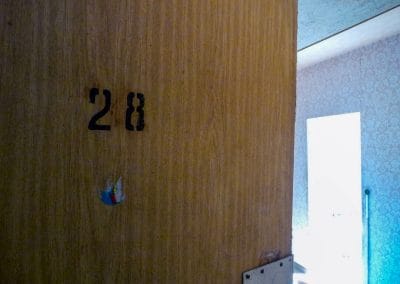
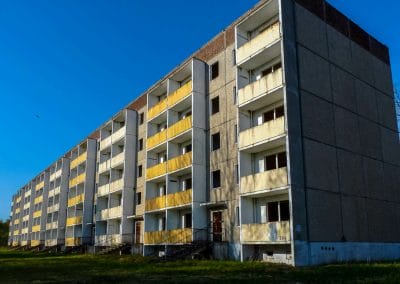
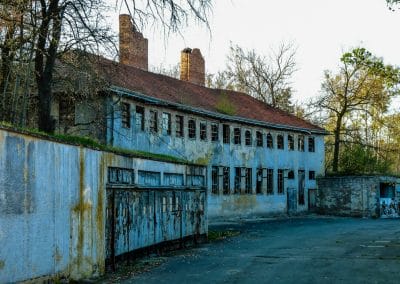

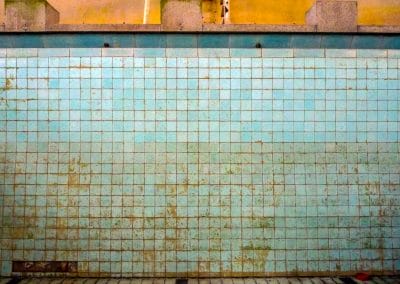


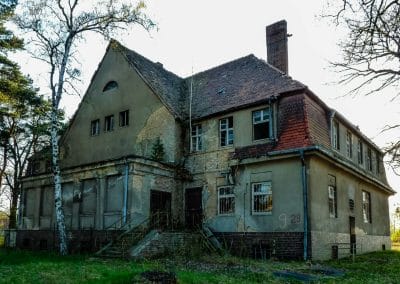
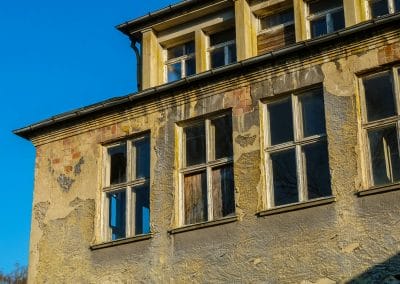
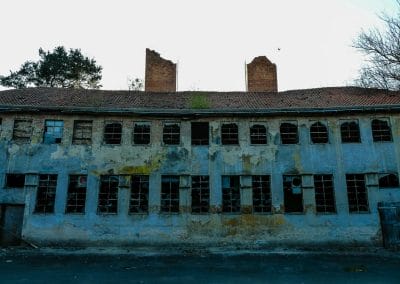
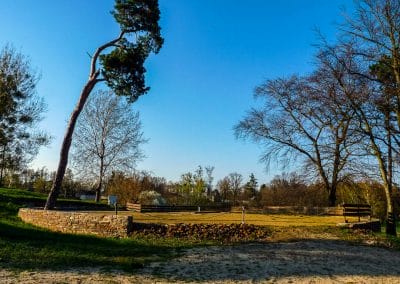
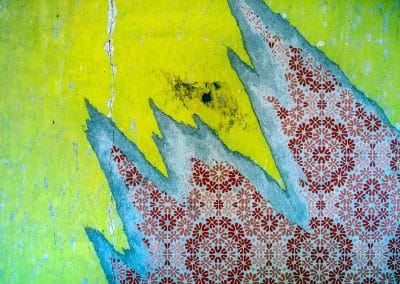
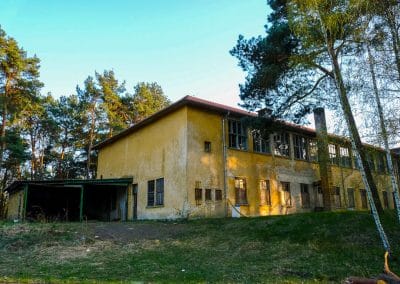
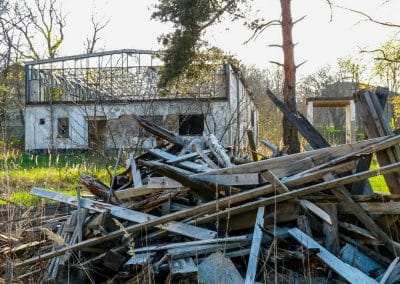

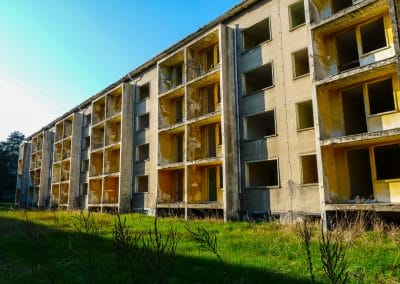
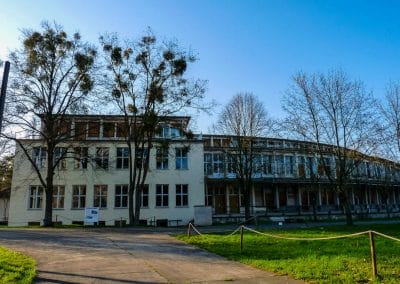


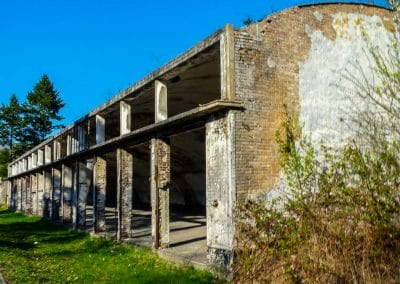

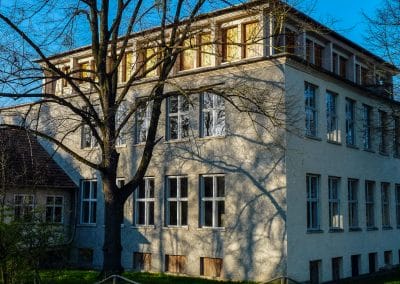
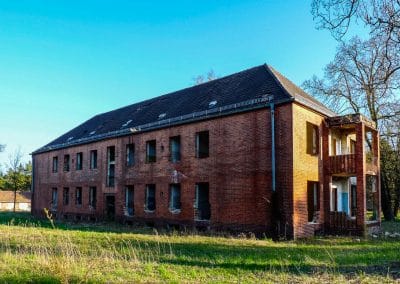
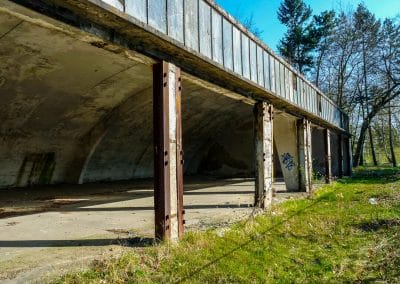
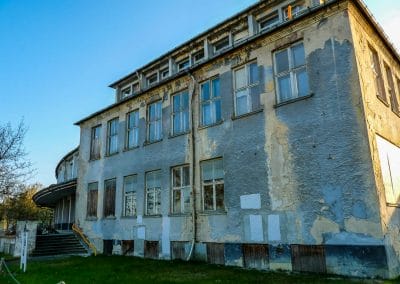
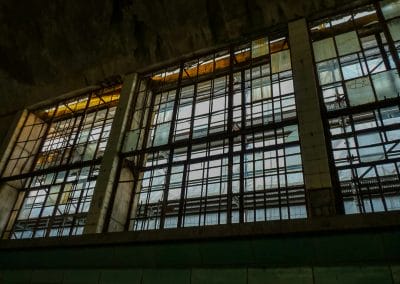
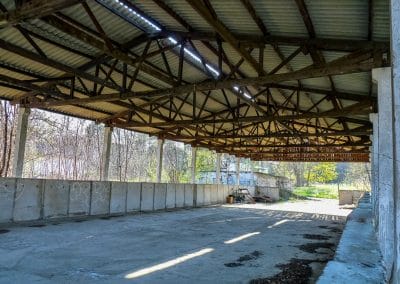
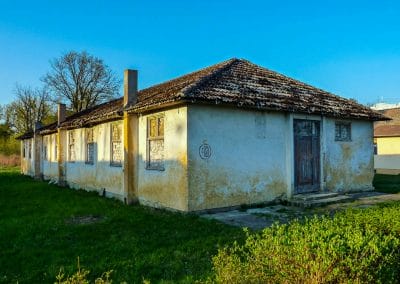


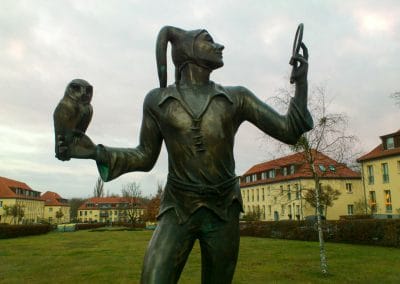


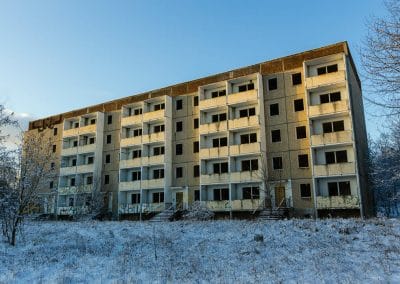



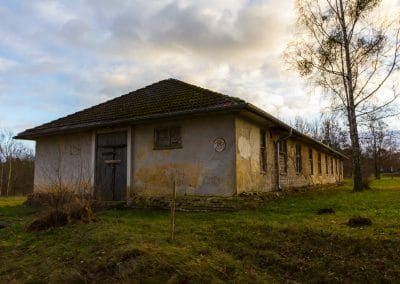

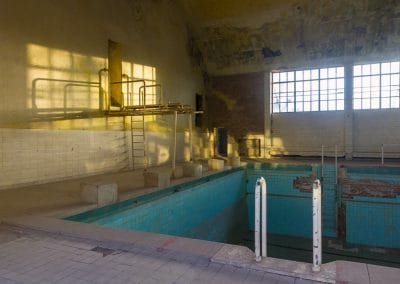
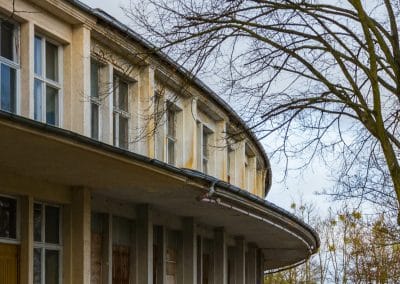
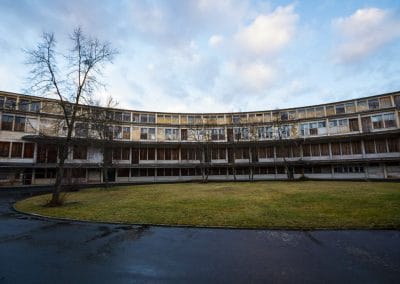
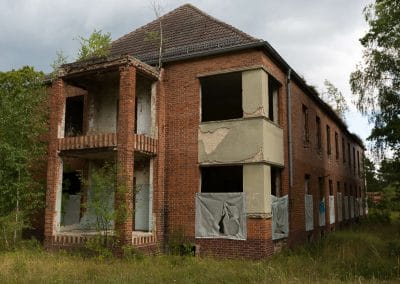
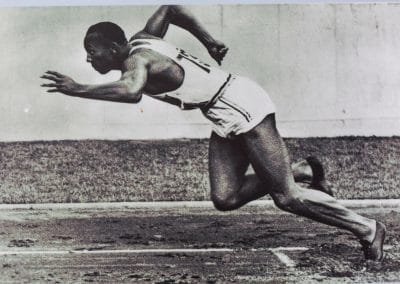

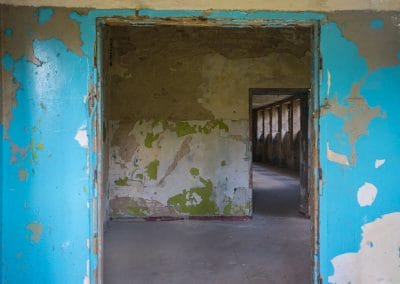
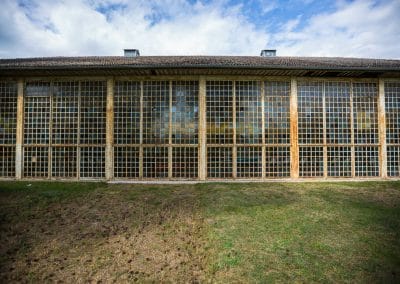
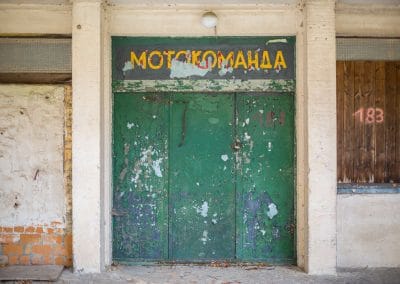
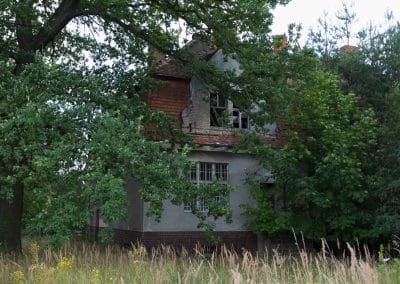


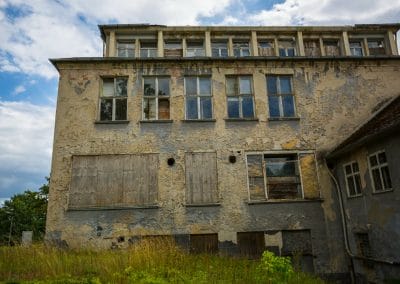
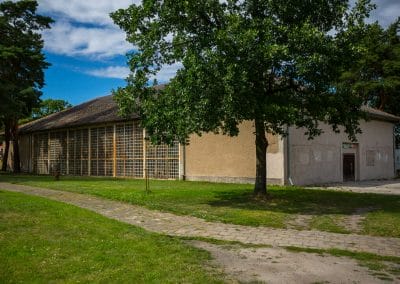
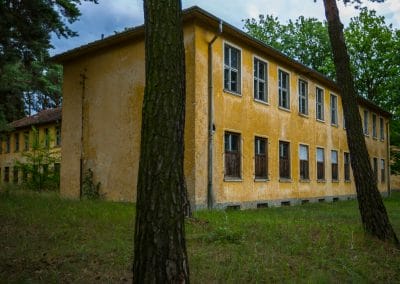

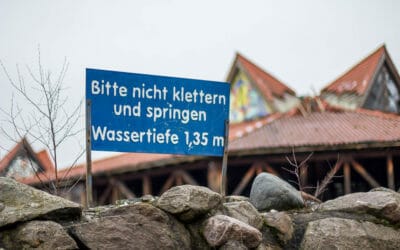

Nice dig at the Brits. You poisonous “Irish” can’t help yourselves. I presume you are still upset your mates the Nazis lost after all these years? De Valera would have made a great Deputy Chancellor to Adolf I reckon.
Lennie
Thanks for the comment Lennie. No need to put the Irish in inverted commas though. I can assure you they are a not a figment of your imagination.
I also think it’s quite unfair to say they are poisonous. Have you ever eaten one? Very tasty with a sprig of parsley.
EH just a question Elstal BHF seems to be closer than spandau?
Yes! RE2 goes from Alexanderplatz. Well spotted!
Hey I think you should downgrade your schwerigkeit. Its not even hard to get there 🙂
Bus 663, 667 stays outside the main entrance (But dont go in that way Ithe guards are there …. Go around and hop ver by the motorway. and if you want to go trough the other side (less guards) 662 to some Kirchecommunity.
Schwerigkeit downgraded as advised. Thanks Robin!
Thanks for another great post.
Just a small update: The place operates as a ‘museum’. You can get in for 1 euro and walk around by yourself but then the only building you can get into is Jesse Owen’s. A guided tour is 4 euro, it’s about 2 hours and in German and you go into a couple of buildings which are locked. Nothing really special. The best sight was probably inside the Hindenburger building with a German WW2 wall of soldiers marching and a Soviet painting of Lenin. Using your camera costs 10 euro regardless of the tour choice. The buildings look pretty well boarded up and if you enter the site while they’re open you’re liable to run into a bunch of retired German tourists. I wouldn’t exactly call the guides for ‘guards’, though. It’s just a guy at the front-hut selling tickets and playing with his phone and then it was a woman conducting the tour 🙂
dkb-stiftung.de/web/Oeffnungszeiten_und_Fuehrungen_im_Olympischen_Dorf_von_1936.52.htm
Still, a great post and thanks again for the inspiration. Hope to see more in the future.
Wow, thanks for the update! I haven’t been out here since I wrote this post so any update on the current state of affairs is very much appreciated. Thanks again!
I notice tomorrow is the last day for the official tours, so I guess from Übermorgen, a bit of Betreten is called for again!
Interesting post!
I wish I had read it before I visited the place.
You might be interested to read my observations and see my photos here auftakt.blogspot.com/2011/10/1936-summer-olympic-village.html
Cheers Andie. Very interesting indeed. I didn’t know that about Speer Junior. Mad! Cool pics too.
Was here last week (Wednesday). Workmen all over the place unfortunately, esp. around the main pool, which they’re restoring. Jumped over anyway and started moving around discreetly but it was pointless – wouldn’t have gotten anywhere interesting without being seen/caught. Even thought about approaching workmen and slipping them some cash for some photos/look around but too many of them (at pool) + even if they were cool prob not worth their while due to insurance issues. Maybe on a Sunday is clearer, but that pool is obv. gonna be restored in no time. I cycled all the way too. Gah!
ps – great site man, thanks for putting it all together.
I am surprised no one has mentioned the little hidden sauna just inside the fence near the motorway.
hello – Im coming to berlin tomorrow (for a rather impulsively book holiday )- just wondering if anyone had been to this place recently? has it all been re-developed since this old post?
Hi, I´m a student from Rome. I’d like to do my final project in architecture on the Olympic Village in Berlin.
Looking for information on internet, I found this interesting post. Do you know if the village is still partially abandoned? Could anyone tell me where could I find further information and more specific material (project drawings)?
Thanks
Thanks for a great post. Do you know anything about the state of it now? I know that there are tours and such, but is there still construction work going on? Was thinking it might be better to go after the guided tours are finished, so late afternoon, but am unsure as to whether it’s best to go on a weekday or during the weekend, do you have an opinion on that?
I haven’t been there lately so can’t help you there I’m afraid. Best just to head out and see what you find!
Hi again,
I’m the last “Anonymous” who asked about the current state of the village. Finally went there today.
I found it super easy to get to (took the train to Elstal and then walked) but the fence was surprisingly high and with barbed wire. We luckily found a hole in the fence behind one of the construction sites opposite the red houses on the street called Zum Wasserwerk. Since we’d read that the “museum” closes at 4 on weekdays, we went there after that. The site was completely abandoned, there was no security at all. Some things have changed over the last couple of years though. The swimming pool has got a new building, though they’ve decided to preserve the inside so it still looks like it did in your pictures. The Hindenburg building, the swimming pool and Owens’ house all seemed as if they were open during the day if you’re willing to pay but we couldn’t get into them since they were locked with things blocking most of the windows.
It was definitely worth a visit. However, it felt more like walking around in a museum for the village than just walking around in an abandoned village as there were signs everywhere. It’s turning into quite a museum now I guess.
Love your site, keep up the great work!
Andrea
I think better than blackmailing the museum, It’s rather good, cause it better be a museum than utterly destroyed by f*cking retards!
btw: Hi, nice site you got. I like reading your articles! Keep up the good work!
I also live around Berlin, never been into urbex before, but for a beginner can you recommend me something please? I think its not really possible, but I like places which looks really much as they left and not attacked by vandalism. Thanks
Sorry about my english skills, I didnt meant “blackmailing”^^, what I mean is: “talking the museum bad”.
I think I know what you mean. You mean it’s better they preserve it than allow it to be trashed by vandals, right?
Well, I agree – if that’s what you mean.
As for untouched abandoned sites, they are few and far between I’m afraid. Vandals are omnipresent. I’ve yet to come across a place that hasn’t been touched by their mindless stupidity.
Thanks for your comment(s)!
Yes thats what I think.
Maybe they change the walls of the swimmhall with new paint, new tiles, but it will always be the same historic location which will look like the olympic games of 1936 was yesterday. It’s better than decay and high possible vandalism.
Which good places do you know?
I would like to go to some place where you can see traces of war.
Wünsdorf-Waldstadt. The place is oozing history. There are broken bunkers, intact bunkers, museums, derelict sites and all manner of stuff to see. Parts of it are well-preserved too. You can do tours if you’re not into DIY.
I would rather do “DIY”. =D
It would be cool if I can find a intact bunker, then I could make good use of my new 4000 lumen flashlight.^^
Do you know where to find one, or is there a map with the locations of all bunkers?
As a side note Wolfgang Furstner mentioned above is buried at the Invalidenfriedhof in Berlin. It has many historical figures from German history buried here.
Hi! We went there today and it is not abandoned anymore. Visit the Olympic Village cost 2€ and it looks like they are restaurating all the village. Anyway, it was a nice trip but soooo warm.
dkb-stiftung.de/Oeffnungszeiten_und_Fuehrungen_im_Olympischen_Dorf_von_1936.52.htm
nice
There is now an association taking care of the site and a man at the gate regulating the entrances. You need to pay 2€ to enter but for this price you cannot/are not allowed to enter into the buildings. There are also guided tours for 5€ or so (only at specific hours) with which you can enter into some of the closed buildings (including the nice and sealed up ones like the swimming pool or canteen).
In many of the more trashed buildings you can actually enter, but the most famous ones (like the swimming pool, the kitchen and the sport hall) are closed and the association seems to be renovating them a bit so that they don’t get too trashed. The interest of the other buildings varies, overall it is not great but here and there you can find some interesting stuff
Have to agree with Lennie about the Irish/Nazis – nothing against the individual Irishmen who fought against tyranny, but what where the Government thinking of when they sent their message of sympathy to Doenitz on Hitlers death.
They were sticking to the line of Irish neutrality and diplomatic protocol. It was controversial at the time and remains so to this day. Not all agreed with it, much as you’d like to think to fit your preconceptions.
And I am glad you’ve nothing against individual Irishmen who fought against tyranny. I’m sure they’ll be breathing a sigh of relief too.
We headed out there today but had to jump the fence because it’s closed in winter and doesn’t open until April. Easy to walk around but everything’s done up nice with signs and information boards. There ws a car patrolling around, so had to watch out for that and be a bit stealthy. Now that it’s a proper tourist site, jumping in feels sketchy.
We have been there in septembre the 27th, a beautiful day, nog knowing what to find but minding your post and your geusts that it might be restored, ….. and yes… it is restored…. we drove on the grasfield and a kind older gentleman in a kiosk came toward us to friendly ask us not to use DSLR camera’s …. so i was… dissapointed … but i could use the small G10 he said but keep it under your coat …. why? i asked… well a phototour is possibel beut only if you pay 40 euro’s … ok understoot… there we go.. a legal and not to impressed visit …. however glad we done it.
You can find a impression of that visit on my Facebook, if you like
facebook.com/exitthegrey/?ref=tn_tnmn
But all credits go to this site wich we used as a guide, as most of our Berlin Urbex journey’s. So thanks! for this great site! We are already planning a new visit soon!
Regards from Ria
exitthegrey.nl
Hi! I will be visiting Berlin soon and I came across your website. Just a quick question, are people allowed to visit this abandoned Olympic Village? How can I reach this place? If I take a taxi, will the driver take me here? Looking forward to your answer, thanks!
Irish berliner ..can you check out you mail i have send a message and i hope you reply..
A very interesting area… and my dog was very interested ;-)Very nice captures, Irish berliner! Many greetings!
youtube.com/watch?v=Fbrx1t2Gn_U
How about just paying 1 euro to get in and help preserve a great place. There are good books about the willage to be bought by the entrance.
I have taken tons of photoes there and had no problem.
I can see now, that it is 4 euro – but still a bargain. And I do not understand all this talk about security and hiding a camera under the coat etc. etc. – it is not an issue there. On the contrary it is vere nice, safe and solemn.
A great place to visit.
Hi, is this place still open officially to visit?
Yep.
Hi, thanks for the response, so if we pitch up tomorrow, we can pay to access and walk around the site?
Great article thanks champ!
Update august 2017.
At the main entrance, there is a poster saying ‘Das Olympische Dorf von 1936 ist NUR im Rahmen einer Sonderführung zu besichtigen. Es gibt keine regulären Öffnungszeiten mehr’. You can also find this on the website:
dkb-stiftung.de/Fuehrungen_im_Olympischen_Dorf_von_1936.52.htm
For some reason you cannot enter the Olympic Village anymore for a moderate fee. It even said you have to book tours at least 14 days ahead. Uhhgg.
If you follow the foot/bike path left from the main gate, you will find some good places to go in (where the fence disappears into the bush). Get in behind the last flat building, beside the Autobahn. It gets busy near the partly renovated swimming pool: guys on lawnmowers, cars driving around and such.
I’m glad I got to wander around for a long time there, but I’m a bit disappointed. If they’re going to close the place and take care of some buildings, at least share it with the public (for a small fee/donation/sterni/whatever). I’d still recommend going though!
I went there today. There was a gate standing open very close to the location given in the original article. As I walked further I quickly stumbled upon one of the guided tour groups that are walking around the site. At that moment I was enclosed by concrete buildings and obviously caught by surprise, however, I pretended to be part of their group and simply managed to walk away unnoticed shortly after. The swimming pool seems to be getting renovated as it looked fairly slick and was surrounded by guys mowing the grass. Unfortunately I couldn’t go inside because of that, but overall it’s definitely worth visiting!
What a beautiful site. I wish I had known about this before I traveled to Germany this summer. I would have loved to have had this information about the olympic village! I look forward to reading more about the abandoned sites of Germany! Thank you for sharing the stories and the beautiful pictures.
We went there yesterday and completely by chance run into “Tag des offenen Denkmals”. The site was open to visitors, but you could only along some paths so no random strolling allowed. On the plus side we got an amazing tour in English for free and learned what’s going to happen with the property.
Apparently DKB Stiftung sold some part of it to a real estate company – terraplan ( terraplan.de/) and they are renovating it and building houses – gold1936.berlin/. Naja.
When I was growing up, living in Berlin, I used to swim in the 1936 Olympics pool, which had been incorporated into one of the US Army caserns. It was a cavernous place, a little spooky. But what a place to swim and take life-saving lessons!
I hope that you keep these posts online – very good read – and very insightful!
I went there today (26. August 2019) with a friend . We found a way to get on top of the fence, if you continue the cycling path on the left of the main gate, there is somewhere where the fence is bent and the barbel wire is gone, so jumping over is easy .however, there were a lot of construction work going on : everywhere, cars , tractors, machines… Because we went on a Sunday , no one was at work but we saw a few builders staying on site (they have their temporary houses there) . We don’t know if they saw us but if they did, then they didn’t mind because no one came to talk to us .We found one building that has the amphitheatre with the Lenin picture that was interesting .all doors and windows of that building are sealed but we found one window where you can remove the panel quite easily. It is located on the right behind the big brick fire escape. Besides that building, the rest was just abandonned residential buildings with very few interest and the main site of the village is already destroyed and being worked on. The swimming pool is gone .We were quite disappointed and would say it was not worth the train ride from Berlin .going there a few years earlier would have been awesome.
Went there today. Loads of families walking around the outskirts, attempted to go inside a building and was stopped by a land surveyor working on a Sunday 😑 got some cool shots of the outside but most of it is fenced off. Maybe another day would be better without any workers there.
Thanks Sarah! I was chased by a security there on Christmas Day, so I think you just need to be careful whenever you go!
Just went in. Northern side (close to the train station) many places to enter. Easiest from the motorway probably. One area is under construction. Eventually some car came, guy came out, chased us, we ran off and got away. Decided to cross the motorway via the bridge. The Olympic area there was much calmer. Almost all houses accessible. Even can get to the roof of one of the towers. Workers are there somewhere in the distance. We saw some dude walking by from the building. So just stay away from the roads and you should be fine here.
That Southern side seems to be the old military camp Döberitz though. But still very interesting. Olympic village itself: Not much to do or see there at the moment, unless you join a tour I guess.
We went yesterday and had a great time. Its true the swimmingpool is gone and they are working in the middle at the Haus der Nationen, but all the other buildings and the gym is still there.
Afterwards we went for a short trip to the old soviet military camp (Löwen-Adler-Kaserne) on the other side of the highway (easy to get in)
T.
Its amazing. I was part of the british forces that worked there after1992 removing anything that could be sold at auction. I remember finding a car left in the garages in the photo above. The place was stunning then wow look at it now.
hallo guys! is still possible to visit? im coming in a few days end july 2023. Can you hel pme to know if is possible?
We were there last weekend and luckily no guards to chase us. There is still more than one spot to cross the fence and get in.
The pool is intact, there is a way in, which I won’t describe here, let it be a fun game for anyone who wants to attempt it.
The gymnastics hall is closed and used as a storage, I wouldn’t attempt to break in there, there might be security alarms around it.
One of the barracks is easily accessible through a low broken window, the rest were locked.
The Hindenburghaus is completely closed off, even that lose window mentioned in 2019 is properly nailed closed.
Another building is accessible, but nothing special to see there except for demolished small apartment/hotel room blocks.
Most of the semi circular buildings are either converted into apartment blocks or are in the process of that.
Still, I would say the pool hall was a very cool thing to see and worth the trip there.
I was under the impression that there are some kind of tours going on, that haven’t been held for a while now. Maybe if such tour takes place, one could get into the gymnastics hall or the Hindenburghaus.
And an update to myself: just checked the DKB Stiftung page where they advertise the guided tours and it looks like this place is no longer a museum or offers any tours since 2019. Maybe that explains the lack of guards..